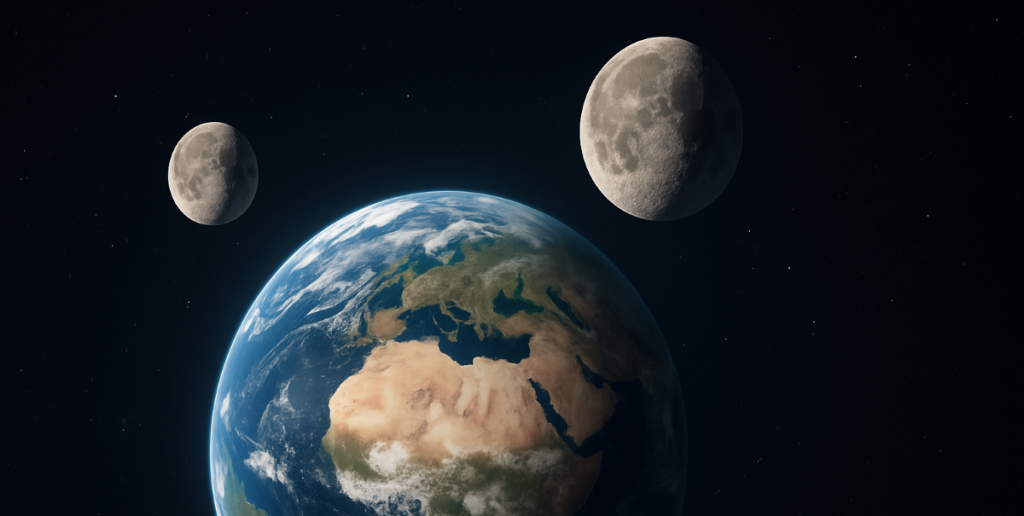It’s not science fiction. astronomers say Earth has picked up a new cosmic companion.
Others are reading now
The small asteroid, officially named 2025 PN7, will circle near our planet for the next six decades, creating the illusion that Earth suddenly has two moons.
A long-term visitor
NASA scientists announced that 2025 PN7 orbits the Sun on a path very similar to Earth’s, which makes it appear to travel alongside us.
It’s not a true moon bound by our planet’s gravity, but what experts call a quasi-moon, a space rock that temporarily “keeps pace” with Earth as both orbit the Sun.
Discovered in August 2025 by astronomers in Hawaii, the asteroid measures about 19 meters across.
Researchers believe it may have been quietly shadowing Earth for decades, remaining invisible due to its small size and faint brightness.
Also read
According to NASA’s projections, 2025 PN7 will continue following Earth’s orbit until around the year 2083, when it will gradually drift away into deep space.
Not bound, but close
Unlike the Moon, which is locked in orbit by Earth’s gravity, a quasi-moon remains largely independent.
Earth’s pull slightly affects its motion, but not enough to trap it permanently.
This delicate balance allows quasi-moons to linger for decades, sometimes even centuries, before moving on.
Similar objects have been observed before, such as Kamoʻoalewa and 2023 FW13, but scientists say 2025 PN7 could be the longest-lived quasi-moon ever recorded.
Also read
Safe, distant, and fascinating
Experts emphasize that 2025 PN7 poses no danger to Earth.
It will never approach closely enough to enter the atmosphere or risk impact, staying millions of miles away, far beyond the orbit of our actual Moon.
Instead, the find gives scientists a valuable opportunity to study how small asteroids interact with a planet’s gravity.
These insights could reveal more about the early formation of our solar system, when young planets and rocky fragments constantly influenced one another’s paths.


